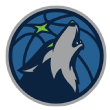Does pairing Rudy Gobert with fellow All-Star Karl-Anthony Towns make sense for the Minnesota Timberwolves?
In a shocking move reported Friday by ESPN's Adrian Wojnarowski, Gobert is going from the Utah Jazz to Minnesota in exchange for four players, the rights to first-round pick Walker Kessler and an incredible four first-round picks.
Say this for Tim Connelly's first big move since leaving the Denver Nuggets to become president of the Timberwolves: It's one of the biggest swings we've seen in recent NBA history. That starts with the idea of pairing two of the four centers to receive All-NBA votes last season. Either Gobert or Towns -- though not both -- has made an All-NBA team every season since 2016-17, with Gobert accounting for four of those selections and Towns contributing two.
How well might the supersized pairing of Gobert and Towns work during both the regular season and the playoffs? And what's next for the Jazz after they made the decision to trade their anchor during a run of six consecutive playoff trips?
Let's break down the massive stakes for Friday's blockbuster deal.
![]() Grading the biggest trades during free agency
Grading the biggest trades during free agency
The deal
Timberwolves get:
Rudy Gobert
Jazz get:
Malik Beasley
Patrick Beverley
Walker Kessler
Jarred Vanderbilt
Leandro Bolmaro
Four first-round picks
Minnesota Timberwolves: D
 In theory, I'm intrigued by the idea of Minnesota moving Towns to power forward during the regular season.
In theory, I'm intrigued by the idea of Minnesota moving Towns to power forward during the regular season.
Once we get to the playoffs, though, is another story.
Last year's Timberwolves defense, which ranked 13th in points allowed per 100 possessions during the regular season, seems close to the peak for one built around Towns at center. It probably still wasn't good enough for Minnesota to realistically advance deep into the playoffs.
Despite the fact that Utah finished just three spots higher in defensive rating, adding Gobert should be transformational for the Timberwolves' defense during the regular season. Where the Jazz relied on Gobert to cover up for a below-average set of perimeter defenders, he'll be working with somewhat more talent in Minnesota.
Offensively, Towns has more than enough skill to make playing power forward next to Gobert work. As the self-proclaimed greatest big man shooter of all time, Towns can keep his defender at home when Gobert screens for Timberwolves guards Anthony Edwards and D'Angelo Russell in the pick-and-roll.
While Gobert's presence in the paint might cramp things a bit when Towns posts up, it's similar to the pairing of Towns and non-shooter Vanderbilt last season. (Vanderbilt's average shot distance was 3.1 feet last season, per Basketball-Reference.com data, barely more than Gobert's 2.7.)
All that adds up to a Minnesota team that should be stronger in the regular season. As deep as the Western Conference looks with the Denver Nuggets, LA Clippers and Portland Trail Blazers all getting healthy, I'd give the Timberwolves better than even odds of finishing in the top six of the standings and avoiding the play-in tournament. (That would be Minnesota's highest seed since 2004, the only time in franchise history the Timberwolves have won a playoff series.)
Although the concept of Gobert being "played off the floor" in the postseason is undoubtedly overstated, other teams going small and pulling him out of the paint has undoubtedly muted his impact.
Towns' versatility should allow the Timberwolves to use him like the valuable combo bigs I discussed in a piece earlier this week who play power forward during the regular season and center during the playoffs. There are only so many minutes available for that when Minnesota has invested in Gobert playing center.
I'm guessing the Timberwolves are hoping that Towns' own post-up game prevents opponents from taking their traditional centers off the court the way they have against Gobert. That might prove accurate. Still, I think at some point in the playoffs, Minnesota will run into an opponent ideally suited to cause problems for the Gobert-Towns frontcourt.
Make no mistake, despite the Timberwolves' playoff history, a deep run is the bar for how much they gave up in this trade. When I first saw Wojnarowski report multiple first-round picks were headed Utah's direction, I figured two or maybe three. Minnesota instead gave up the maximum four tradeable first-round picks in the next seven years, the first three (2023, 2025 and 2027) entirely unprotected with top-five protection on the 2029 pick.
It's remarkable another team was willing to make a trade like this given how poorly the past few seem to be working out. The Clippers and Los Angeles Lakers still might make their pick-heavy deals for Paul George and Anthony Davis, respectively, with Davis helping the Lakers win the title and the Clippers in the mix to win this year. That said, both teams sent back unexpected lottery picks this year with more picks still out the door going forward.
Meanwhile, the Brooklyn Nets and Houston Rockets giving up a series of draft picks to acquire James Harden and Russell Westbrook, respectively, backfired when neither player lasted long in his new home. Houston is rebuilding and needed lottery luck to avoid swapping Oklahoma City the No. 5 pick last year, while the obligations to the Rockets affect the Nets' decision of how to handle Kevin Durant's trade request.
Granted, the Timberwolves didn't give up nearly as much in terms of valuable players from the current roster as those teams did. None of the four players headed to Utah was certain to be on Minnesota's roster past next season, while the Timberwolves managed to hang on to their second-best young player (Jaden McDaniels, now likely to start at small forward and be the team's top wing defender).
Still, Minnesota has a lot of questions about what the roster around a core of Edwards, Gobert and Towns will look like. Most pressing is what to do with point guard D'Angelo Russell entering the final season of his contract. With the Timberwolves forfeiting the opportunity to create cap space next summer, the options are probably retaining Russell on a new contract or whatever return he can fetch in trade.
Hanging over that is how expensive Minnesota's core will quickly become. Edwards is due a rookie extension in 2024-25, the same year Towns' new supermax extension kicks in. Gobert and Towns alone will make a projected $93 million that season (the value of Towns' deal won't be determined until the salary cap is set that season), with Edwards looking at another $36 million or so at the lower-level max.
As ESPN's Zach Lowe and I discussed on Thursday's Lowe Post, if the Timberwolves had the choice between this deal for Gobert and the trade the Atlanta Hawks made for Dejounte Murray, I too would have favored a move for Murray. He's a cleaner fit in Minnesota who would have been on the timeline of Edwards and Towns and wouldn't have cost as much either in terms of draft picks or salary.
The Timberwolves chose the bigger gamble, and we won't know for several years whether that was the right call.
Utah Jazz: A
 A year ago, I was dismissive of the idea of trading Gobert as an overreaction to Utah's playoff disappointment. A season later, I think the time was probably right. A first-round playoff exit with Luka Doncic missing the first half of the series was much more difficult to justify, especially with so many teams now capable of using the five-out formula the Clippers developed in 2021 to drag Gobert away from the basket.
A year ago, I was dismissive of the idea of trading Gobert as an overreaction to Utah's playoff disappointment. A season later, I think the time was probably right. A first-round playoff exit with Luka Doncic missing the first half of the series was much more difficult to justify, especially with so many teams now capable of using the five-out formula the Clippers developed in 2021 to drag Gobert away from the basket.
It was also worth asking how long Gobert would retain this kind of trade value. He turned 30 last week and has one of the NBA's largest contracts. The Jazz were surely right to maintain a high price for a Gobert trade, enabling them to avoid seeming desperate yet still take advantage if someone was willing to meet that threshold.
The most interesting element of this deal, as presaged by ESPN's Brian Windhorst's cryptic explanation on Get Up, is Utah's front office choosing to build a deal around draft picks rather than trading Gobert for multiple contributors to try to create a different winning formula around younger All-Star Donovan Mitchell. The Jazz are now left with a bounty of picks and a transitory roster, meaning more moves are surely in store.
At the moment, Utah's center depth chart consists of 2020 first-round pick Udoka Azubuike, who's played 252 minutes in two NBA seasons, and No. 22 overall pick Kessler. That could set up the Jazz to make a run at a Deandre Ayton sign-and-trade with the Phoenix Suns, though they'd likely need to loop in a third team to deliver Phoenix a replacement center.
Meanwhile, Utah is overstocked at guard, where Beverley and Beasley join holdovers Mitchell, Mike Conley and Jordan Clarkson. It wouldn't be surprising to see the Jazz reroute those players elsewhere.
Beverley should have modest trade value on the one-year extension he signed with Minnesota worth $13 million after showing his importance as a veteran presence on a young team.
Perhaps Mitchell ends up next to be traded and Utah pivots to a deep rebuild. Either way, the starting point of the Gobert trade will better position the Jazz for what comes next.
